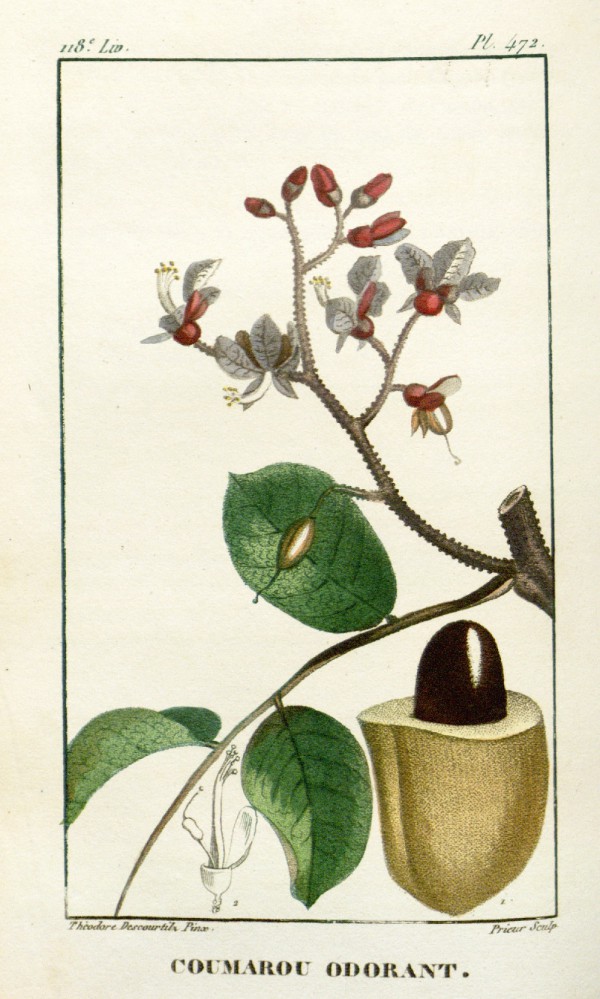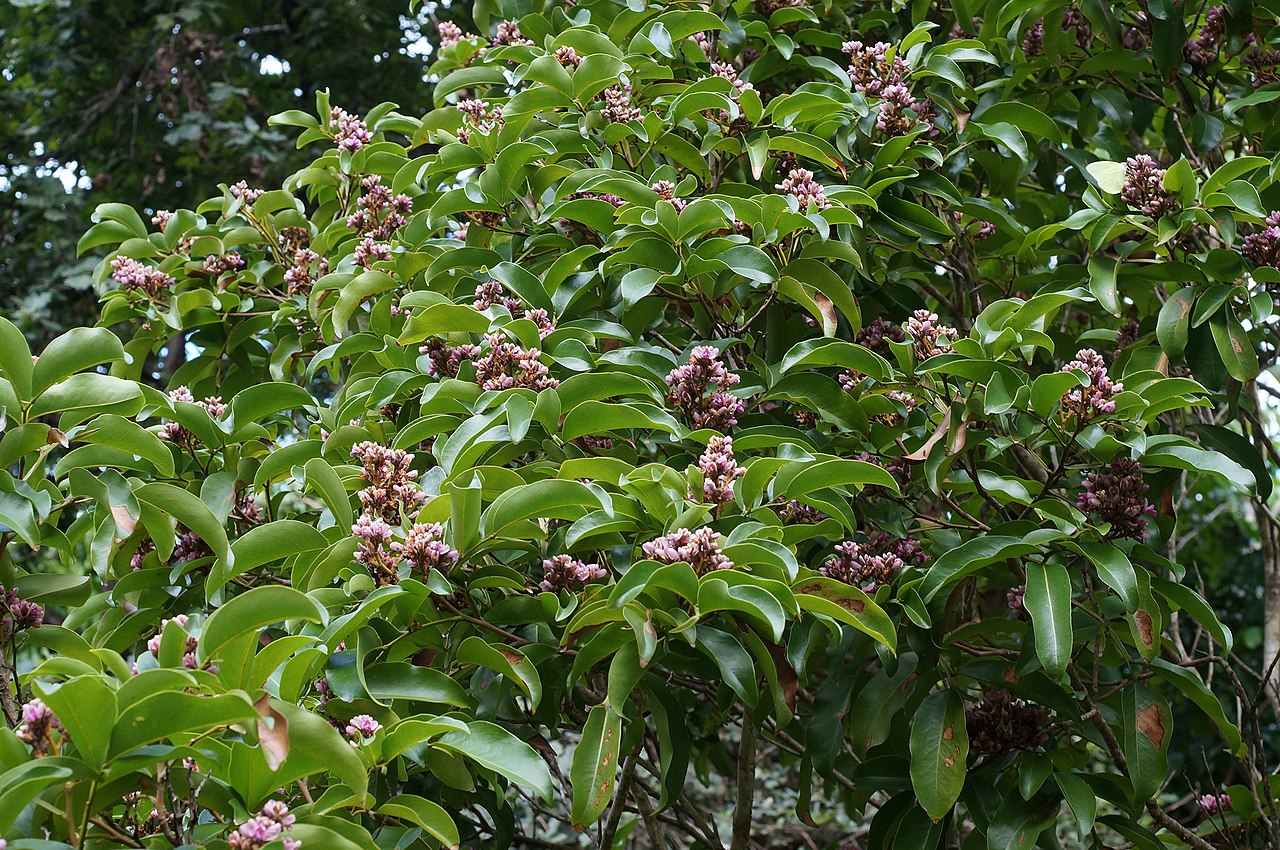Dipteryx odorata (Aubl.) Willd. - syn. Coumarouna odorata Aubl. (nom. rej.) - Fabaceae - cumaru, tonka tree, Tonkabaum, Tonkabohne
Native tree (up to 25-30m high) of the northern South America, growing along the banks of great rivers, like the Orinoca, Putumayo and Rio Negro. Cultivated also in Trinidad and Africa. The seeds are known as tonka beans.
„The word „tonka“ is taken from the Galibi (Carib) tongue spoken by natives of French Guiana; it also appears in Tupi, another language of the same region, as the name of the tree. The old genus name, Coumarouna, was formed from another Tupi name for tree, kumarú.“ http://en.wikipedia.org/wiki/Dipteryx_odorata
Dried seeds:
Cotyledones of mature tonka fruits contained coumarinic acid (cis-o-coumaric acid; free 0.6-6.1%, bound 0.06-6.7%) and o-coumaric acid (trans; free 0%, bound 0.1-0.2%). „An active β-glucosidase was detected in extracts of tonka bean leaves and cotyledons. Unlike the almond β-glucosidase, however, the tonka bean enzyme rapidly hydrolyzed coumarinyl glucoside and was essentially inert toward o-coumaryl glucoside. In its specificity for the cis glucoside, the tonka bean enzyme resembled sweetclover β-glucosidase… in the tonka bean, as in sweetclover, coumarin is synthesized through the conversion of o-coumaryl glucoside to coumarinyl glucoside which under suitable conditions may be hydrolyzed to yield coumarinic acid. Spontaneous lactonization of coumarinic acid then produces coumarin.“
[Glucosides of coumarinic and o-coumaric acids in the tonka bean., Haskins, F.A., Gorz, H.J., Science, 139(3554), 1963, 496-497] http://digitalcommons.unl.edu/cgi/viewcontent.cgi?article=1165&context=agronomyfacpub
The seeds are well known for coumarin as main constituent, but about 90% of the seed extracts („Mexican vanilla extracts“) contain also small amounts of umbelliferone (7-hydroxycoumarin, 0.01%).
[Occurrence of umbelliferone in the seeds of Dipteryx odorata (Aubl.) Willd, Gerald Sullivan, J. Agric. Food Chem. (1982) 30 (3), 609–610]
 coumarin (for cumarin toxicology, see galium_odoratum_l._scop)
coumarin (for cumarin toxicology, see galium_odoratum_l._scop)
„…138 volatile constituents were identified, 131 of which have not previously been described as tonka bean constituents. 2-Undecylfuran, identified for the first time in nature, was proposed as a suitable component for analytical characterization (indicator) of tonka beans.“
[Flüchtige Inhaltsstoffe aus Tonkabohnen (Dipteryx odorata Willd.), Martin Wörner, Peter Schreier, Zeitschrift für Lebensmittel-Untersuchung und Forschung (1991), 193 (1), 21-25]
„Based on the results of GC-MS analysis,… coumarin, dihydrocoumarin, melilotic acid (o-dihydrocoumaric acid), methyl melilotate, ethyl melilotate, 5-hydroxymethylfurfural and o-coumaric acid … are characteristic compounds of tonka beans.“
[HPLC analysis of tonka bean extracts., Ehlers D, Pfister M, Bork WR, Toffel-Nadolny P., Z Lebensm Unters Forsch. 1995 Sep;201(3):278-82]
Flowers:
„The chemical composition of the volatile concentrates of the flowers of Dipteryx odorata, the cumaru (tonka) tree of the Amazon, was obtained by simultaneous distillation-extraction and analyzed by GC and GC/MS. The major components identified were germacrene D (31.1%), bicyclogermacrene (13.0%) and spathulenol (11.3%).“
[Volatile Constituents of the Flowers of Dipteryx odorata (Aubl.) Willd., Eloisa Helena A. Andrade, Maria das Graças B. Zoghbi, Léa Maria M. Carreira, José Guilherme S. Maia, Journal of Essential Oil Research (2003) Volume 15, Issue 3, 211-212]

Dipteryx odorata (Aublet) Willd. as Coumarouna odorata Aublet
Descourtilz,M.E., Flore médicale des Antilles, vol.7 t.472 (1829) [J.T.Descourtilz]
http://plantgenera.org/species.php?id_species=350886

Flowering Tonka Bean tree, Mount Coot-tha Botanic Gardens, Brisbane (2020)
Tatters ✾ CC BY-SA 3.0
Wikimedia Commons
